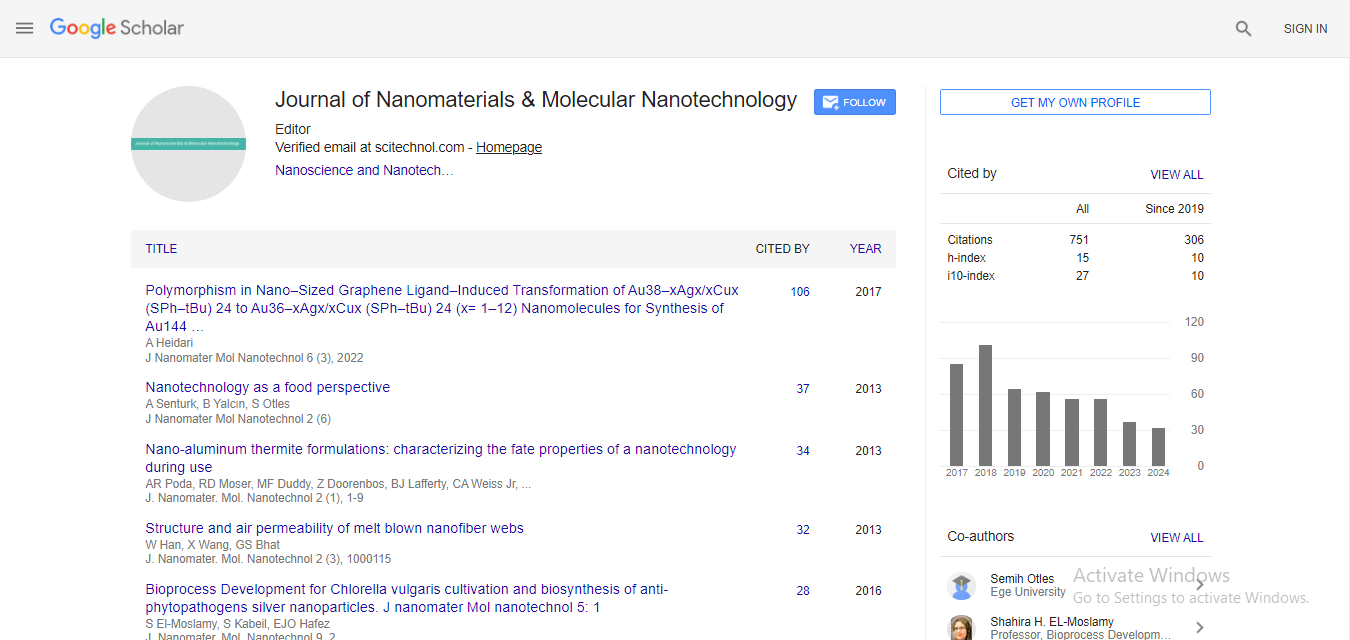The branched-chain glycolipid nanoparticles with liquid crystalline and self-assembly properties as new drug carrier systems
Noraini Ahmad, Syaidatul Atiqah Sazalee and Rauzah Hashim
University of Malaya, Malaysia
: J Nanomater Mol Nanotechnol
Abstract
Synthetic glycolipids have attracted a great deal of attention due to their biosurfactant properties, biocompatibility, biodegradability, nonionic nature and its ability to mimic the natural glycolipids which are difficult to extract and require high cost. Glycolipids are amphiphilic surfactants which have the ability to self-assemble and thus have high potential to be used as drug carrier systems. In this research, the liquid crystalline and self-assembly properties of branched-chain glycolipid namely 2-hexyldecyl-β(/α)-D–glucoside (2- HDG) have been investigated. The liquid crystalline phase behavior of this 2-HDG has been studied through thermal transitions by differential scanning calorimetry (DSC) and under thermotropic and lyotropic conditions by optical polarizing microscope (OPM) and further confirmed by small-angle X-ray scattering (SAXS). Due to its amphiphilic characteristic, 2-HDG formed a focal conic texture of columnar phase thermotropically, whereas inverted hexagonal dispersions (hexosomes) have been observed in binary aqueous media. The critical aggregation concentrations (CAC) were studied for the glycolipid surfactant and mixed surfactants systems of glycolipid and Tween series. The results exhibited that the addition of co-surfactant to the glycolipids dispersions has reduced the CAC value of 2-HDG, thus making the system more stable. The CAC values decreased in the order of 2-HDG>2HDGTween 20>2HDG-Tween 40>2HDG-Tween 60>2HDG-Tween 80. The formations of 2-HDG and 2-HDG-Tween hexosomes were further investigated in terms of their particles size and morphology. Thus, this branched-chain glycolipid provided an alternative nonionic surfactant with interesting phase behavior and high potential nanoparticles (hexosomes) which could be used as drug carrier systems in the future.
Biography
Noraini Ahmad received her PhD degree in Physical Chemistry from University of Malaya, Malaysia. She went for a Research Attachment at the IQAC-CSIC, Barcelona, Spain in 2010 and 2011 funded by InForm Project, EU-FP7 and Ministry of Higher Education Malaysia, respectively. Currently, she is a Senior Lecturer and final year Project Coordinator at the Department of Chemistry, University of Malaya. She is a Principal Investigator and Co-investigator of several research grants and has won several awards locally and internationally. Her research interests are focused on colloidal chemistry, liquid crystal and nanotechnology formulation for many practical applications.
Email: ainie@um.edu.my
 Spanish
Spanish  Chinese
Chinese  Russian
Russian  German
German  French
French  Japanese
Japanese  Portuguese
Portuguese  Hindi
Hindi 



